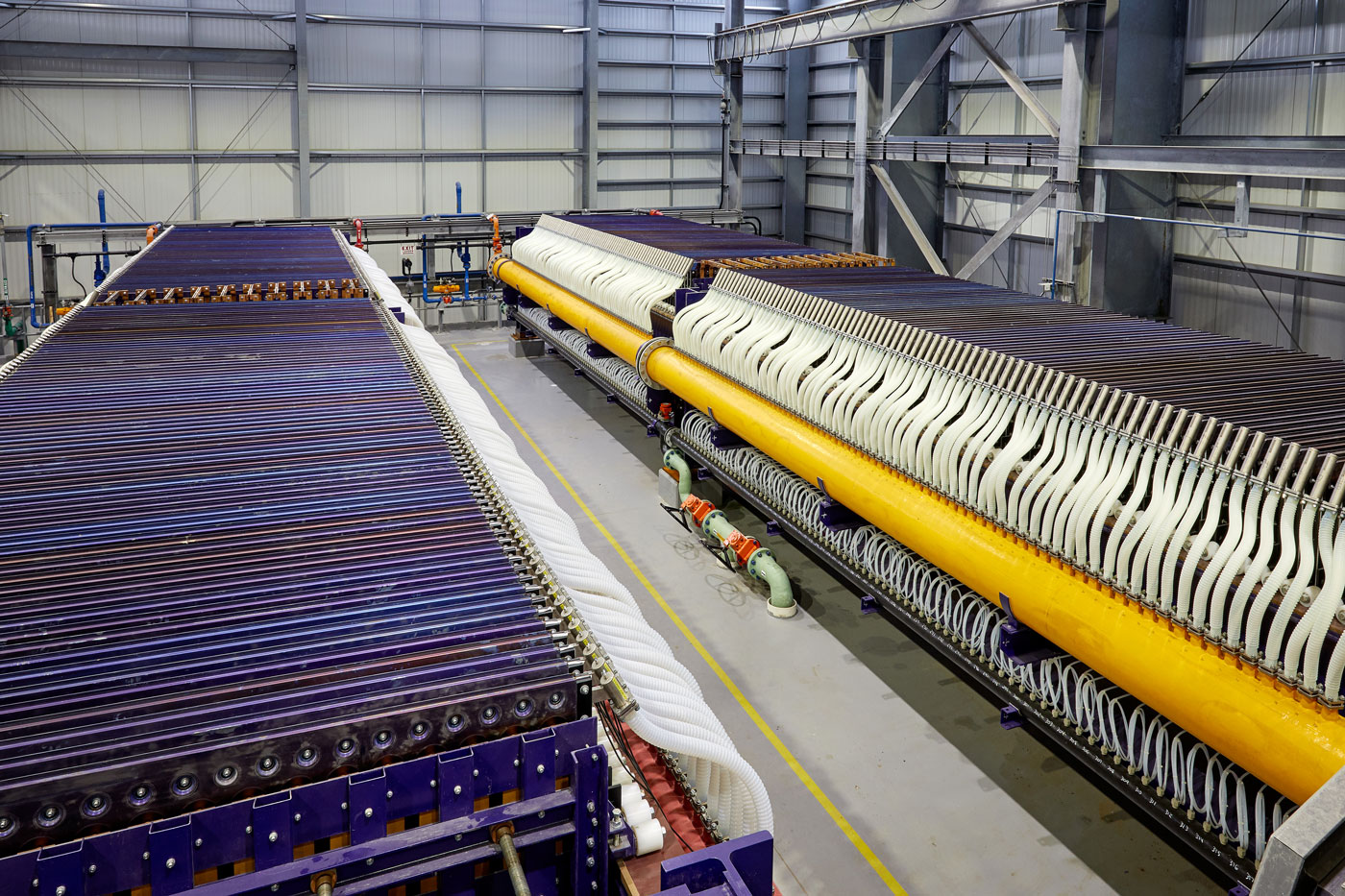- Membrane cell electrolysers - the most modern and most prevalent process, consisting of an anode in an anolyte compartment, separated by a cation exchange membrane from a cathode in a catholyte compartment. INEOS BICHLOR electrolysers feature a modular membrane cell design for highest efficiency, safety, reliability and simple maintenance. Learn how a membrane cell electrolyser works.
- Alkaline water electrolysers (AWE) - Used to produce Hydrogen, alkaline water electrolysers consist of two electrodes (one positive and one negative) immersed in an electrolyte solution, typically a potassium hydroxide (KOH) solution, separated by a diaphragm or membrane. When an electric current is passed through the electrolyte, the water molecules near the negative electrode undergo reduction, producing hydrogen gas. Learn more about alkaline water electrolysers and the appplications for Hydrogen.
- Diaphragm cell electrolysers - feature two compartments separated by a permeable diaphragm, often made of asbestos fibres. Brine is introduced into the anode compartment and flows into the cathode compartment. Chloride ions are oxidised at the anode to produce chlorine, and at the cathode water is split to make caustic soda and hydrogen with the diaphragm preventing a reaction between the chlorine and caustic soda.
- Mercury cell electrolysers – known as the Castner Kellner process, chlorine and sodium hydroxide are produced from brine in an electrolytic cell, where liquid mercury acts as a cathode. Due to safety concerns regarding occupational health and mercury pollution, the mercury cell process is now largely obsolete, with only a few plants still operating globally. It is anticipated that as they reach the end of life the remaining mercury cell installations will be replaced with membrane cell processes.
Electrolysers
There are three main industrialised electrolysis processes used for the production of chlor-alkali products such as chlorine, caustic soda or hypochlorite:

Alkaline Water Electrolysers
Explore the efficiency and sustainability of Alkaline Water Electrolysers (AWEs). With a modular design tailored for seamless integration, these electrolyser systems represent cutting-edge hydrogen production technology. Discover their versatility across renewable energy storage, clean fuel generation, and industrial processes.
Read more
Modular Membrane Cell Electrolysers
Membrane cell electrolysis features a sealed module that consist of two chambers, separated by a flexible cation exchange membrane, to prevent chlorine and hydrogen gasses mixing. The two chambers are formed by the anode and cathode pan assemblies respectively, and once connected to an electricity supply, is where the electrolysis takes place.
Read more